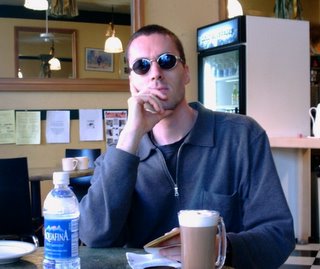Villages not Focus Groups
- The artificial context of focus group situation which puts consumers in a more rational mind set than normal. Consumers decide much more emotionally and significantly faster than any focus group situation can simulate
- The Team set up of gathering a group of strangers does not reflect the real network of decision and opinion influencers that most consumers experience, mainly with their family and friends.
- Consumers are not deciding or thinking within 90 minutes of scheduled time slots but are fragmenting their thoughts and decisions about brands throughout the whole day, at any possible time and location. The isolated location and scheduled time slot fully of focus groups corrupts any real consumer insight.
Despite this strong push for the disappearance of focus groups, I haven’t seen too many applications or research methodologies that would replace focus groups and its limited but still powerful insight potential. It seems that any replacing methodology or applications will need to include several key elements to really substitute for focus groups:
- Maximizing the natural and non-artificial context and set-up of the research realm. It’s all about being as close as possible to real life as possible
- Increasing the time of observed behavior. It’s a 24/7 world and we marketers should observe the consumers in this new context not only in a predefined time slot that is convenient, but does not reflect today’s consumer behavior
- Integrating as many media capturing devices as possible to reflect the multiple ways of how consumers express their path of forming brand attitudes and purchase decisions
I call this to be designed research methodology “The village” since its core value proposition returns to the origin of anthropological studies. In the forming stages of anthropology the researcher traveled to the far away village, observes the villagers behavior day and night for years with as little obstruction and influence as possible. Despite the fact that these early pioneers have actively changed the villagers behavior (despite their claim of attempting to minimize their culture changing influence), they have acted much more sensitively than any market researcher who gathers focus groups to derive insights. Imagine the early anthropologists who would have invited the village inhabitants to focus group gatherings outside of their village context, with very limited time, and in a round table like discussion with complete strangers from other villages. It would have been an absolute disaster withoutmeaningful insights.
In my suggested concept of “The village” we would combine the passion of early anthropologists like Levi-Strauss but we would limit the researcher’s influence. We would enable the research object (=the customer) to capture his or her behavior, thoughts, and spoken words across all media vehicles that we have access to in today’s world: Starting from self shot videos, blogs, photos, etc. This multi media self recording and producing research methodology, driven by the consumer and moderated by the marketer, combines the over 150 year old wisdoms of early anthropology with our changed consumer and marketing world.
Now, we just need to find the marketers and planners who translate this concept into real applications. We are definitely only at the beginning of replacing focus groups with more sensitive and insightful research methodologies but this development path will be full of breakthrough research and initial failures. I can’t wait to see it happen.


3 Comments:
Thank you for sharing a nice article.
Congratulations on your posts, not go from your site successful.
When you love what you do then work doesn’t seem like work!If creativity is what you are all about and if animation isyour first love, then rush to ZICA today! And let yourpassion lead you!Mercedes has set the pace in taking initiatives. In August, it signed up as the automotive partner for all motor sporting events at the Budhh International Circuit in Greater Noida for two years. The Mercedes SLS AMG-with top speed of 317 km/hr-will be the 'safety car' for all racing events at the circuit. It will also provide cars to race officials.
Daewoo Control Arm
This comment has been removed by the author.
Post a Comment
<< Home